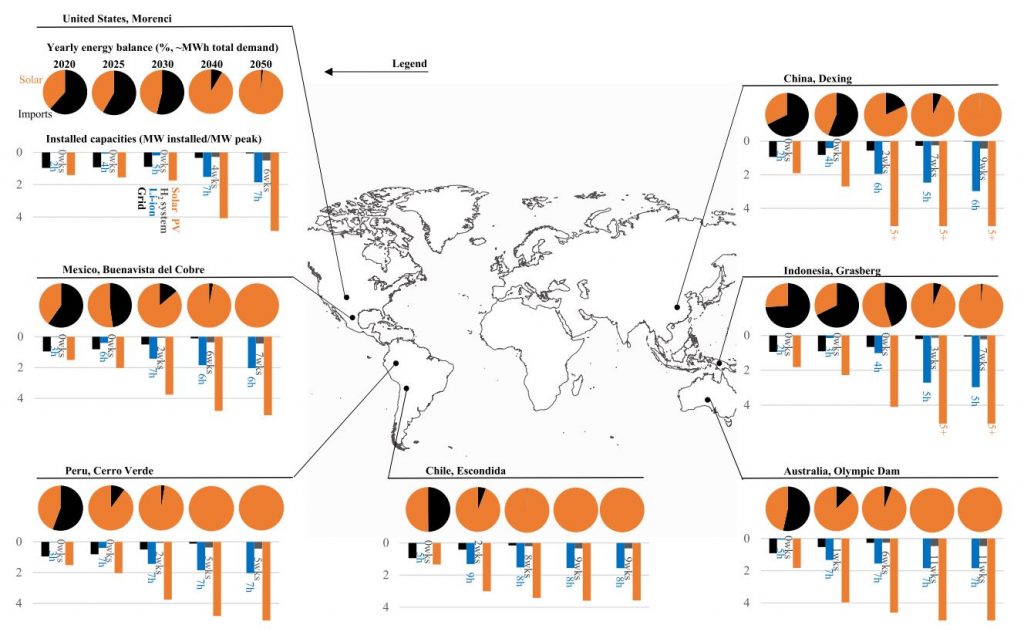
In March 2020, this publication came out. Work done in collaboration with colleagues from University of Stuttgart, German Aerospace Center, University of Waterloo, University of British Columbia and Universidad de Chile. The paper can be downloaded here.
Copper mining: 100% solar electricity by 2030?
Jannik Haas (Department of Stochastic Simulation and Safety Research for Hydrosystems (IWS/SC SimTech), University of Stuttgart / Department of Energy Systems Analysis, Institute of Networked Energy Systems, German Aerospace Center (DLR)), Simón Moreno-Leiva (Department of Stochastic Simulation and Safety Research for Hydrosystems (IWS/SC SimTech), University of Stuttgart), Tobias Junne (Department of Energy Systems Analysis, Institute of Networked Energy Systems, German Aerospace Center (DLR)), Po-Jung Chen (Mechatronics Engineering, University of Waterloo), Giovanni Pamparana (Norman B. Keevil Institute of Mining Engineering, University of British Columbia), Wolfgang Nowak (Department of Stochastic Simulation and Safety Research for Hydrosystems (IWS/SC SimTech), University of Stuttgart), Willy Kracht (Department of Mining Engineering, University of Chile / Advanced Mining Technology Center (AMTC), University of Chile), Julián M. Ortiz (Robert M. Buchan Department of Mining, Queen’s University)
Abstract
Extracting copper is energy-intensive. At the same time, copper is a key material for building the energy systems of the future. Both facts call for clean copper production. The present work addresses the greenhouse gas emissions of this industry and focuses on designing the future electricity supply of the main copper mines around the world, from 2020 to 2050, using distributed solar photovoltaic energy, storage, and a grid connection. We also consider the increasing energy demand due to ore grade decline. For the design, we use an optimization model called LEELO. Its main inputs are an hourly annual demand profile, power-contract prices for each mine, cost projections for energy technologies, and an hourly annual solar irradiation profile for each mine. Our findings show that it is attractive for the mines to have today a solar generation of 25% to 50% of the yearly electricity demand. By 2030, the least-cost solution for mines in sunny regions will be almost fully renewable, while in other regions it will take until 2040. The expected electricity costs range from 60 to100 €/MWh for 2020 and from 30 to 55 €/MWh for 2050, with the lower bound in sunny regions such as Chile and Peru. In most locations assessed, the low cost of solar energy will compensate for the increased demand due to declining ore grades. For the next steps, we recommend representing the demand with further detail, including other vectors such as heat and fuels. In addition, we recommend to include the embodied emissions of the technologies to get a more complete picture of the environmental footprint of the energy supply for copper production.
